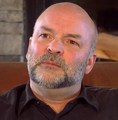THE FIRST DECADE OF PHILADELPHIA’S GREEN CITY, CLEAN WATERS PROGRAM: “We had sold people on the concept, but we did not expect the level of complexity that was required, the level of partnership. We had no idea,” said Paula Conolly, director of the Green Infrastructure Leadership Exchange

Since entering into an innovative partnership with the United States EPA almost a decade ago, Philadelphia has become a testing ground for green technologies. Philadelphia’s program involves creating ‘greened acres’ — expanses of impervious land that are transformed either to absorb the first 1½ inches of rainfall or send it into rain gardens or other local green infrastructure systems. The City has created more than 1,500 of a projected 10,000 greened acres.










